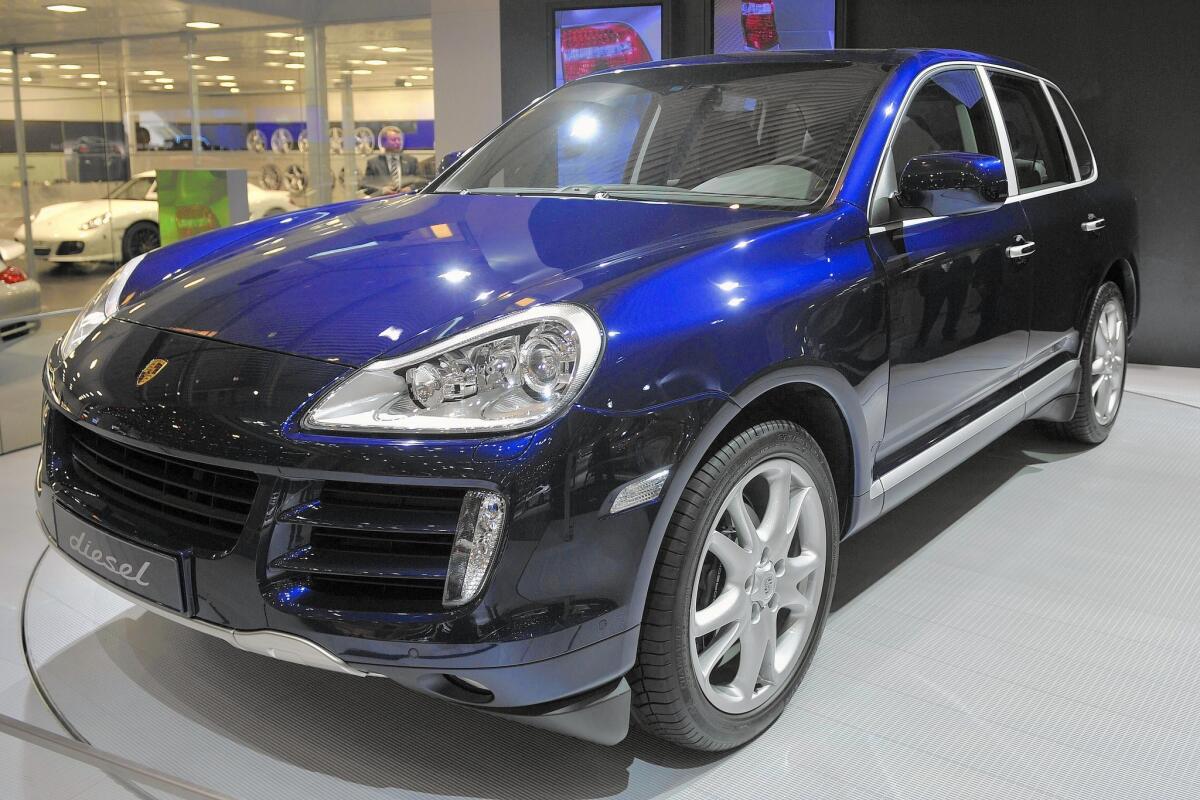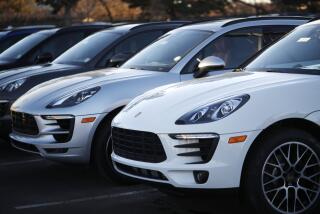Porsche Cayenne Diesel: Practical but also powerful

Porsche’s Cayenne Diesel is an appealing combination of sports car and SUV.
While the world was immersed in the Volkswagen emissions cheating scandal, and critics and consumers were predicting the death of diesel, I was driving one — the 2015 Porsche Cayenne Diesel.
I was loving it. But I was also a little confused by it.
The Cayenne is Porsche’s top-selling vehicle. Since its late 2002 introduction, the four-door luxury crossover has been an increasingly large contributor to the company’s bottom line. The 2016 model, identical to this 2015 I tested, is expected to be a strong seller.
So far this year, through August, vehicles in the Cayenne family outsold the increasingly popular Macan. Cayenne sales were more than twice as many as all the Boxsters and Caymans combined, and almost twice as many as all the 911s and 918s combined.
A third of all Porsches sold in the U.S. this year so far have been Cayennes — about 20% to 25% of them diesels. (Porsche, while part of the Volkswagen empire, is unaffected by the cheating scandal.)
It’s easy to see why. I found the Cayenne, after a week in the cockpit, an appealing combination of sports car and SUV. It sits high, with enough ground clearance to give it a little off-road capability, so it loses some of the go-kart stability of a Cayman. It doesn’t have the cargo room typical of a full-size people mover, but a good bit more than a 911, for sure.
So it’s practical, but it’s powerful too. Capable of 135 mph on a track — says Porsche; I didn’t push it that hard — the diesel model is powered by a 3.0-liter turbocharged V-6 engine that makes 240 horsepower and 406 pound-feet of torque.
That’s not 911 fast. It takes the Cayenne diesel more than 7 seconds to get from standing still to 60 mph. But the power is deployed efficiently through the eight-speed Tiptronic S transmission. A hill-hold feature flattens the steep streets, and the car’s traction management system uncomplicates the curves.
Three suspension settings are available — comfort, sport and sport plus, and off-road — to give the driver a chance to match the terrain to the driving experience.
Because it’s a diesel and has a big tank, it also has tremendous range — well over 500 miles between fueling stops. It’s quiet, too, and so comfortable I can almost imagine driving that long, between gas stations, without emerging crippled.
With or without the paddle shifters, the Cayenne manages city and freeway traffic capably, with plenty of pep for passing.
The interior is well-appointed and features the fit and finish one expects from Porsche. It’s a soft environment and emits the gentlest imaginable noises when you err and leave the headlights on, or the door ajar, or the seat belt unlatched — delightful, compared with the Defcon 9 sirens that some cars employ.
But it’s also outfitted with more switches, dials and knobs than any SUV I’ve ever seen.
There’s the usual battery of buttons in the center console. There’s another collection inside the steering wheel, with some duplication. More are available on the door panels. And there are still more overhead, in the area where one usually finds controls for the sun roof.
Alongside the requisite odometer, speedometer and tach are indicators for oil and water temperature, oil pressure and fuel level, as well as a gear indicator, voltometer, altimeter, tire pressure gauge and air temperature gauge. And a compass. In addition to the navigation screen. And the climate control. And the entertainment options.
I was a little overwhelmed, and wondered whether, if I got into trouble, I should call AAA or the FAA. “I’ve deployed the cup holders and engaged the cruise control. But the bomb bay doors won’t open. Houston! We have a problem!”
The Cayenne range is quite broad, with prices to match. The entry level standard starts at about $55,000. But it’s possible to spend three times that on a fully dressed Cayenne Turbo S.
Porsche says the GTS, Turbo and Turbo S models, at the high end of the spectrum, account for about 40% of all Cayenne sales in the U.S. Despite the sticker spread, the vehicles share the same body, transmission and interior options. They differ principally in power trains: Horsepower climbs from model to model from 300 to 440 with the V-6 motors to 570 with the V-8, while zero-to-60 rates drop from 7.3 to 4.9 to 3.8 seconds.
Porsche executives say the average Cayenne buyer is already a Porsche owner, typically a family man or woman with a 911 in the garage, but needing something a little roomier for the daily preschool run.
I know some Porsche enthusiasts of a certain age and a certain gender who believe the company never should have started making four-door cars at all. But Porsche says it sells more four-doors in the U.S., though just barely, than two-doors.
So really those Cayennes, Macans and Panameras are underwriting all the development going into the next 911 or 918 — and maybe even making them more affordable. The critics should be happy someone else is helping pay for all the fun they’re having driving Porsche sports cars.





